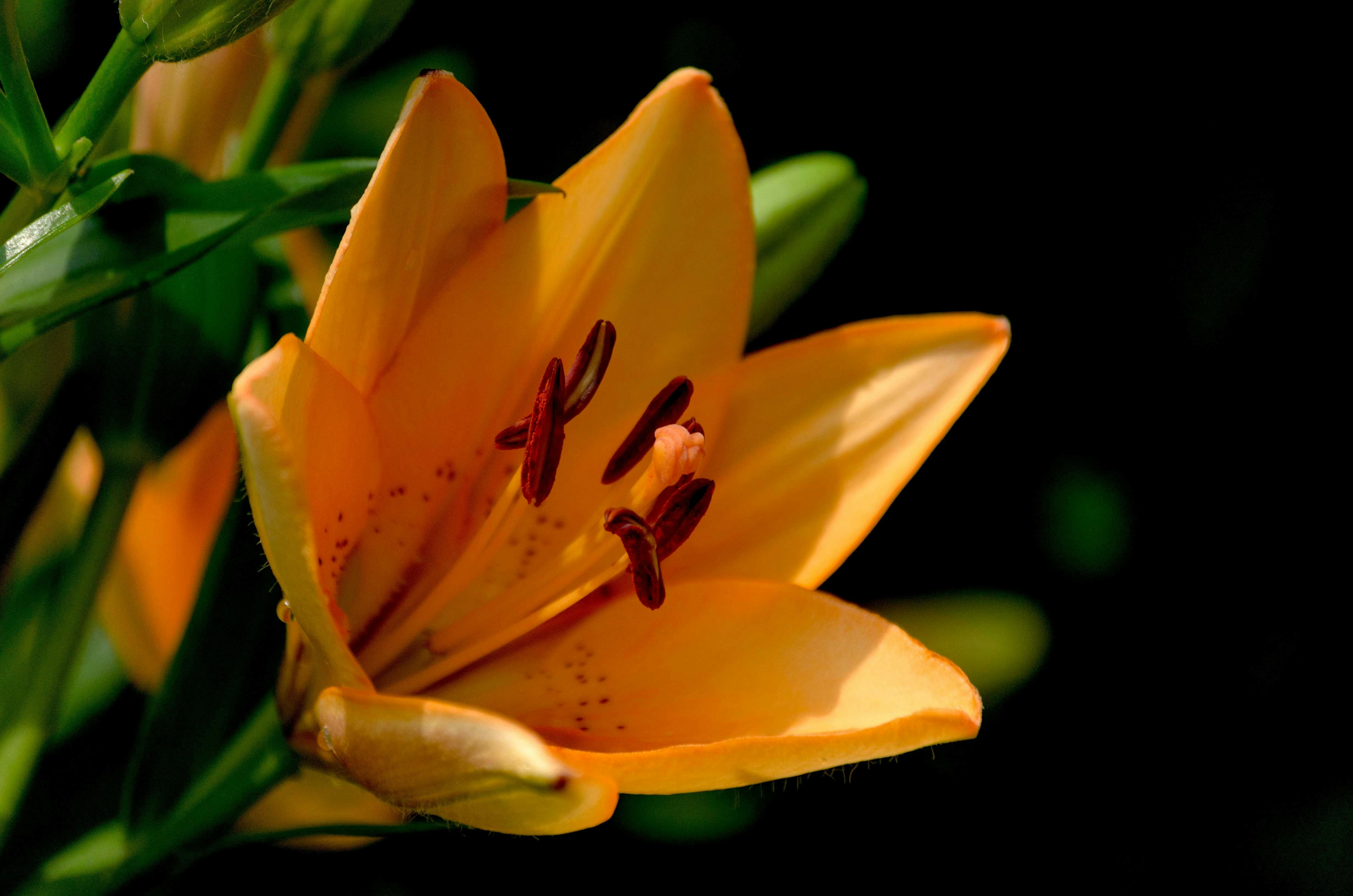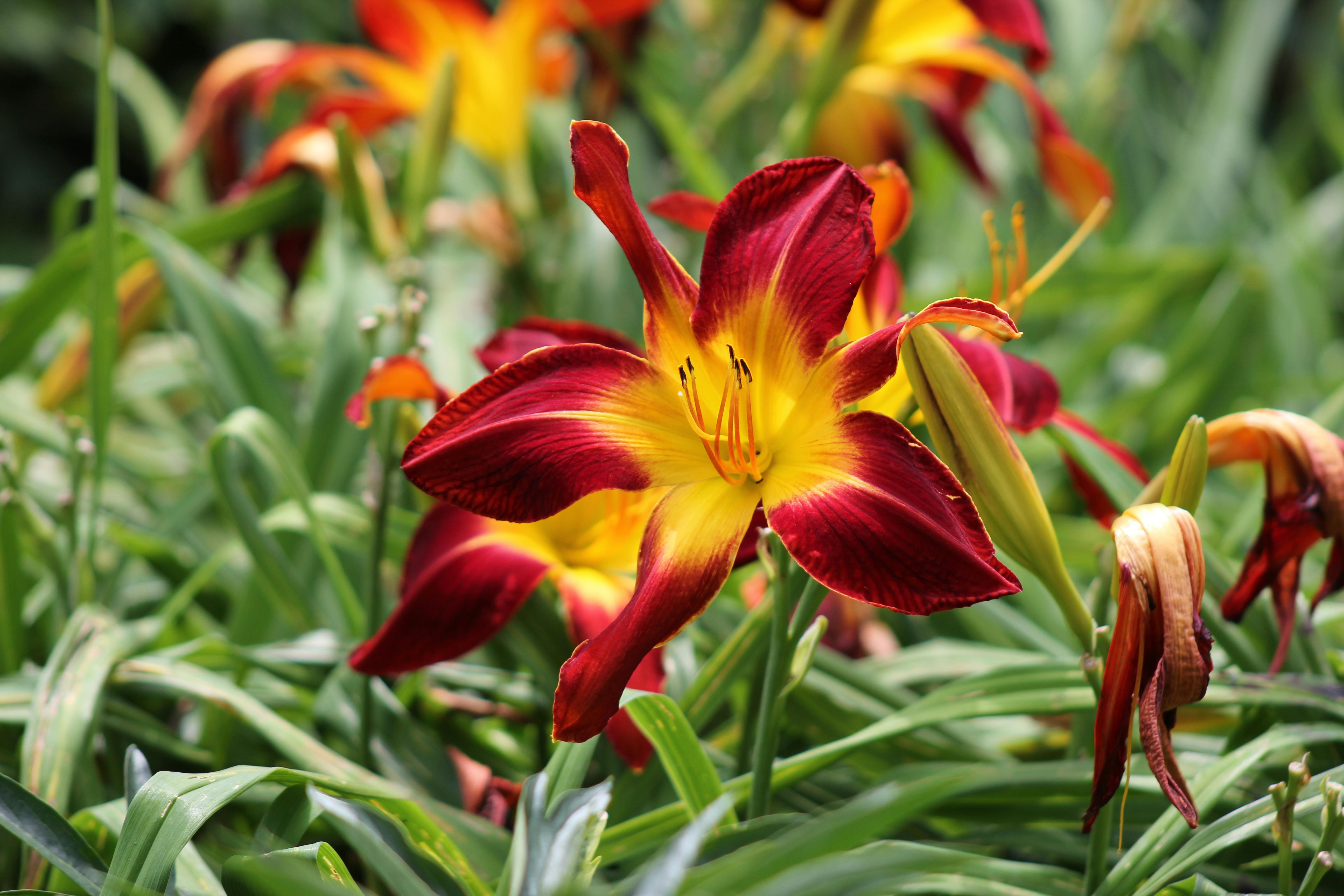Daylilies are beautiful, low-maintenance flowers that can brighten up any garden. They are an excellent choice for gardeners of all levels of experience. When planting daylilies, it is important to consider what other plants will pair well with them. With careful selection, it is possible to create a stunning garden display that incorporates daylilies and other plants that complement each other beautifully. There are many plants that can be planted with daylilies in order to create a vibrant and interesting garden landscape.
Choosing Companion Plants for Daylilies
When selecting companion plants to pair with daylilies, it is important to consider several factors. First, the desired look and feel of the garden should be taken into account. Will the daylilies be planted in a mass or as a single specimen? Will the companion plants be used to draw attention to the daylilies or provide a border or backdrop?
Second, consider the growing conditions for each plant. Different types of plants have different needs in terms of sunlight, water, soil type, and fertilizer requirements. Make sure that all the plants will be able to thrive in the same space.
Finally, think about bloom times. Ideally, companion plants should bloom at different times than daylilies to ensure that there is always some color in your garden throughout the season. Look for plants that bloom before or after daylilies so that they can fill in when the daylilies are not in bloom.
There are many great options for companion plants for daylilies. Some popular choices include hostas, ornamental grasses, phlox, coreopsis, and sedums. These plants provide texture and color contrast while also complimenting the beauty of daylilies without taking away from them. With careful selection and consideration of all factors involved, companion planting can help create a stunning display in any garden!
Types of Plants That Work Well With Daylilies
Daylilies are a popular choice for landscaping because they are easy to care for and available in a wide variety of colors. Daylilies also look great when paired with other plants, allowing gardeners to create an eye-catching display of color and texture. Fortunately, there are many types of plants that work well with daylilies and can be used to create an attractive and interesting garden.
One option to consider when planting with daylilies is ornamental grasses. These offer a pleasing contrast in texture and form, while also providing a nice backdrop for the colorful blooms of the daylily. Ornamental grasses come in many different varieties, from small tufts of grass to larger clumps that can reach several feet in height. Many varieties are also drought-tolerant, making them an ideal choice for gardens in dry climates.
Another type of plant that looks great when planted with daylilies is perennials. Perennials will continue to bloom year after year, adding color and interest to the garden throughout the seasons. Many perennials bloom during different times throughout the year, which means they can be used to create a continuous display of color in the garden. Some popular perennials that look great with daylilies include lavender, daisies, coreopsis, black-eyed Susan’s and coneflower.
Finally, annuals can be used as filler plants between daylily clumps or as edging plants around flowerbeds. Annuals like petunias and impatiens make excellent choices because they fill in quickly with their bright blossoms and colorful foliage. They also tend to bloom all season long, providing a steady supply of flowers throughout the summer months. Additionally, annuals are very low maintenance and require only minimal watering and fertilizing during their growing season.
Planting with daylilies is easy when you have an assortment of companion plants to choose from. Ornamental grasses, perennials and annuals all look great when paired with daylilies, creating an attractive display full of color and texture that will last throughout the seasons.
Tips for Planting
When planting daylilies with other plants, the first step is to choose the right location. Daylilies thrive in full sun, so make sure to select a spot that gets at least six hours of direct sunlight each day. It’s also important to make sure the area is well-draining, as daylilies are prone to root rot if they’re planted in soggy soil. Once you’ve chosen a spot, dig a hole that is twice as big as the root ball of your plant. The soil should be loose and amended with compost or a slow-release fertilizer before planting. Gently place the plant in the hole and backfill with soil, then water thoroughly.
Caring for Daylilies
Daylilies require regular watering for healthy growth and blooms; however, they should never be allowed to sit in soggy soil. If possible, use drip irrigation or soaker hoses to provide consistent moisture without over-saturating the plants. During periods of drought, it may be necessary to supplement with additional waterings. When it comes to fertilizing daylilies, a balanced fertilizer should be applied once per month during spring and summer months for optimal blooming. Be sure not to over-fertilize, as this can lead to leaf burn and poor blooming.
It’s also important to keep an eye out for pests and diseases that may affect your daylilies. Common pests include aphids, thrips, mites and slugs; look out for discolored foliage or stunted growth which could indicate an infestation. If you do find any pests on your daylilies, use an insecticidal soap or neem oil solution and spray both sides of the leaves until they are completely saturated.
With proper care and maintenance, daylilies can thrive when planted alongside other plants in your garden. Follow these tips for planting and caring for your daylilies so you can enjoy their beautiful blooms all season long!

How to Group and Space Companion Plants for Daylilies
Grouping daylilies with companion plants is a great way to create a stunning garden display. Companion plants are plants that grow well together, helping each other to thrive in their environment. When choosing companion plants for daylilies, it is important to consider the size of the daylily bed, the soil conditions, and the climate. To ensure that your daylilies get the best care possible, be sure to group and space the companion plants properly.
When grouping companion plants with daylilies, keep in mind that some varieties of daylilies are taller than others, so you may need to adjust the height of your companion plants accordingly. For example, if you have shorter varieties of daylilies in your garden bed, you may want to consider planting taller companion plants such as ornamental grasses or shrubs along the edge of the bed for visual interest.
When it comes to spacing out your companion plants with daylilies, it is important to make sure that there is enough space between each plant so that they have room to spread out and grow without crowding each other. To ensure proper spacing between companion plants and daylilies, use a measuring tape or ruler when planting them in the garden bed. This will help you create an even distribution of companion plantings throughout the bed.
Finally, when grouping and spacing out companion plants with daylilies, be sure to check your local climate conditions and soil type before planting anything. Certain types of companion plants may not do well in certain climates or soil types so it is important to do your research before making any final decisions on what type of companions should be planted near your daylilies. By taking these extra steps before planting any companions near your lily beds, you can ensure that they will thrive in their environment and provide beautiful blooms all season long!
Shrubs and Trees to Plant With Daylilies
When planning a garden, daylilies are often a popular choice due to their vibrant blooms and easy maintenance. To create a stunning landscape, however, shrubs and trees should also be considered when planting daylilies. The right plants can create a backdrop of lush foliage, provide shade during hot summer days, and bring year-round interest to the garden. Here are some shrubs and trees that pair well with daylilies:
Lilac shrubs are one of the most popular choices for pairing with daylilies. Lilacs come in shades of purple, pink, white, and blue, making them an excellent choice for adding color to your garden. They also have a sweet fragrance that will fill the air on warm spring days. Lilacs bloom in late spring and can reach heights of 10 feet.
Crape myrtles are another great choice for pairing with daylilies. Crape myrtles come in several shades ranging from white to deep pink or red. They bloom from mid-summer to late fall and can reach heights of 25 feet. In addition to providing color during the summer months, crape myrtles also add interest with their mottled bark in the winter.
Trees such as weeping willows or river birches can also be used to create an attractive backdrop for daylilies. Weeping willows are popular choices due to their graceful branches and bright green foliage. River birches have attractive peeling bark that adds texture and visual interest throughout the year. Both trees provide ample shade during hot summer days.
By combining these shrubs and trees with your daylily plants you can create a beautiful garden that will last all year long!
Perennials to Plant With Daylilies
Daylilies are perennial plants that grow throughout the summer months, providing beautiful blooms in a wide array of colors. They make an excellent addition to any garden, but they can also be planted with other perennials to create an even more stunning display. Some of the best perennials to plant with daylilies include roses, coreopsis, clematis, and hostas.
Roses are a classic flower that pairs beautifully with daylilies. While roses typically bloom in the spring and summer months, their fragrant blooms can bring life to a garden all year round. When planted alongside daylilies, they create a vibrant mix of colors and textures.
Coreopsis is another great perennial to pair with daylilies. This bright yellow flower grows well in full sun and blooms throughout the summer months. It will bring a cheerful pop of color to any garden when planted alongside daylilies.
Clematis is a fast-growing vine that adds texture and beauty to any garden. It produces colorful flowers in shades of pink, purple, white, and blue that will look stunning when planted alongside daylilies. Clematis is also easy to care for and will provide plenty of blooms during the summer months.
Finally, hostas are ideal for planting with daylilies as they have similar growing requirements and bloom times. Hostas come in a variety of sizes and colors which can be used to create interesting patterns when planted together with daylilies. They also make an excellent groundcover which will help keep weeds at bay while adding beauty to your garden.

Conclusion
Daylilies are a great addition to any garden. Not only are they easy to grow and maintain, but they also provide an array of colors and shapes that can be planted with other perennials, annuals, and shrubs. Planting daylilies with other plants can help add texture and interest to a garden bed or border. When choosing plants to pair with daylilies, consider factors such as color, height, bloom time, and sun requirements. Planting flowers that bloom at different times can extend the show of color in the garden throughout the season. And when it comes to texture, adding foliage plants such as hostas or ornamental grasses can help bring out the beauty of your daylilies even more. With so many options available for pairing daylilies with complementary plants, you’re sure to create a stunning garden display that will last for years to come.
No matter which plants you choose to plant with your daylilies, be sure to pay attention to their needs and provide them with plenty of sun, water, and nutrition. By creating an environment that meets their needs, you can ensure that your daylilies will thrive and bring joy to your garden for many years into the future.

